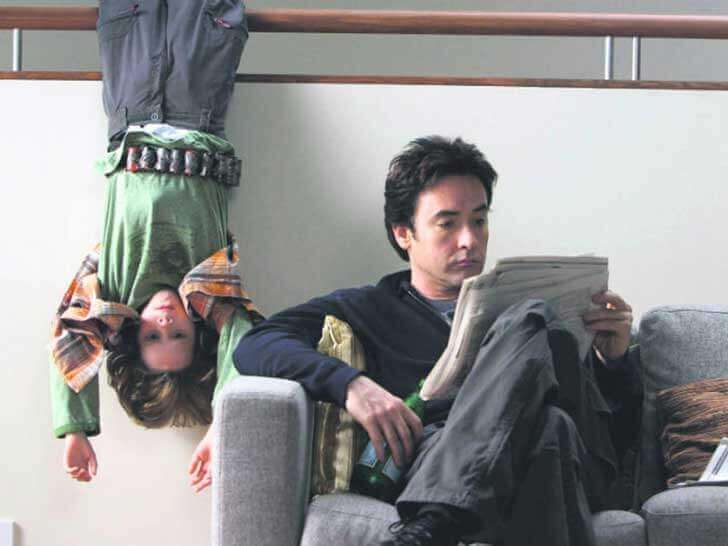How Do I Know if My Child Is Hyperactive?


Reviewed and approved by the psychologist Elena Sanz Martín
As a parent, you may be asking yourself how you can tell if your child is hyperactive or if they’re just in a restless and mischievous stage. The fact is that hyperactivity reveals things that a mere restless attitude won’t show. But before asking yourself if you’re child is hyperactive, it’s important to know what hyperactivity is.
According to the United States Centers for Disease Control and Prevention: “Attention-deficit/hyperactivity disorder (ADHD) is a behavioral syndrome. It’s a behavioral disorder characterized by moderate to severe inattention, periods of brief attention, motor restlessness, emotional instability, and impulsive behaviors“.
This syndrome is fully treatable and correctable once it’s diagnosed. However, if it’s a matter of simple restlessness, as parents, we must do everything possible to correct negative behaviors. As well as rewarding good behavior and letting the child develop naturally in their environment.
Hyperactivity increases when the child is in the presence of people with whom frequent relationships aren’t established. In the same way, they can decrease activity considerably when they’re completely alone.
Is my child hyperactive?

If you suspect that your child is hyperactive, difficult to educate, and has trouble with self-control, it’s important that you review each of the characteristics that identify this mild behavioral disorder. That way, you can start carrying out the relevant treatments as soon as possible.
- Excessive or inappropriate motor activity
- Trouble concentrating
- Destructive attitudes or behaviors
- Little willingness to carefully perform a task
- Desires to move compulsively (not being able to sit still or sit in one place)
- Inability to complete tasks
- Difficulty tending to something individually (they want to do more than their cognitive and physical capacities can)
- Little willingness when it comes to being discreet: They always say what they think, they talk too much
- They can’t stop doing the things they like even if we give warnings (example: Jumping)
- They ignore the duties and obligations
- They almost always overlook cognitive precipitation, they don’t think things through before acting
Recommendations to treat hyperactivity

After identifying if your little one has hyperactivity, there are different ways to treat it. You can choose to use behavioral methods or a combination of therapies and medical treatments. Some of these treatments are:
- Behavioral techniques or methods achieve behavior modification through reinforced education. One of the recommendations to treat hyperactivity is to know the behavior of the child in the classroom to provide them with a development that’s appropriate for their needs.
- There are institutions in which the number of students decreases considerably. This way, they manage to provide more individual attention to the child, a relationship with the less aggressive environment, and the ease of identifying any difficulty that the child may present.
- Other recommendations are focused on the home, as it can be the place where the child spends the most time. These techniques require patience and integration on the part of the parents.
- The colors of the room should be light, the play area should be clean, orderly and nothing should be overloaded.
- Children with hyperactivity tend to copy what the people around them do, which is why mom and dad can use this experience in a positive way when doing housework while repeating the instructions out loud clearly and briefly.
- Other cognitive-behavioral methods are aimed at managing their own behavior or self-control. But to achieve this, the child must learn to observe and correct their own behaviors.
- Therapies or a psychologist could solve the problems in a few sessions in order to achieve self-control. If the process is a little more serious, your child may be referred to a psychiatrist, and the doctor might recommend some drug treatment for anxiety.
Consistency is the key
Once all these recommendations have been followed, it’s your responsibility to reward the changes you make during these behavioral methods. Agreeing on rewards when appropriate, like candy or the game they want, will motivate them to make the changes that parents want to see made. You have to arm yourself with love and patience to implement these techniques and ensure that your child leads a more functional and happier life.
As a parent, you may be asking yourself how you can tell if your child is hyperactive or if they’re just in a restless and mischievous stage. The fact is that hyperactivity reveals things that a mere restless attitude won’t show. But before asking yourself if you’re child is hyperactive, it’s important to know what hyperactivity is.
According to the United States Centers for Disease Control and Prevention: “Attention-deficit/hyperactivity disorder (ADHD) is a behavioral syndrome. It’s a behavioral disorder characterized by moderate to severe inattention, periods of brief attention, motor restlessness, emotional instability, and impulsive behaviors“.
This syndrome is fully treatable and correctable once it’s diagnosed. However, if it’s a matter of simple restlessness, as parents, we must do everything possible to correct negative behaviors. As well as rewarding good behavior and letting the child develop naturally in their environment.
Hyperactivity increases when the child is in the presence of people with whom frequent relationships aren’t established. In the same way, they can decrease activity considerably when they’re completely alone.
Is my child hyperactive?

If you suspect that your child is hyperactive, difficult to educate, and has trouble with self-control, it’s important that you review each of the characteristics that identify this mild behavioral disorder. That way, you can start carrying out the relevant treatments as soon as possible.
- Excessive or inappropriate motor activity
- Trouble concentrating
- Destructive attitudes or behaviors
- Little willingness to carefully perform a task
- Desires to move compulsively (not being able to sit still or sit in one place)
- Inability to complete tasks
- Difficulty tending to something individually (they want to do more than their cognitive and physical capacities can)
- Little willingness when it comes to being discreet: They always say what they think, they talk too much
- They can’t stop doing the things they like even if we give warnings (example: Jumping)
- They ignore the duties and obligations
- They almost always overlook cognitive precipitation, they don’t think things through before acting
Recommendations to treat hyperactivity

After identifying if your little one has hyperactivity, there are different ways to treat it. You can choose to use behavioral methods or a combination of therapies and medical treatments. Some of these treatments are:
- Behavioral techniques or methods achieve behavior modification through reinforced education. One of the recommendations to treat hyperactivity is to know the behavior of the child in the classroom to provide them with a development that’s appropriate for their needs.
- There are institutions in which the number of students decreases considerably. This way, they manage to provide more individual attention to the child, a relationship with the less aggressive environment, and the ease of identifying any difficulty that the child may present.
- Other recommendations are focused on the home, as it can be the place where the child spends the most time. These techniques require patience and integration on the part of the parents.
- The colors of the room should be light, the play area should be clean, orderly and nothing should be overloaded.
- Children with hyperactivity tend to copy what the people around them do, which is why mom and dad can use this experience in a positive way when doing housework while repeating the instructions out loud clearly and briefly.
- Other cognitive-behavioral methods are aimed at managing their own behavior or self-control. But to achieve this, the child must learn to observe and correct their own behaviors.
- Therapies or a psychologist could solve the problems in a few sessions in order to achieve self-control. If the process is a little more serious, your child may be referred to a psychiatrist, and the doctor might recommend some drug treatment for anxiety.
Consistency is the key
Once all these recommendations have been followed, it’s your responsibility to reward the changes you make during these behavioral methods. Agreeing on rewards when appropriate, like candy or the game they want, will motivate them to make the changes that parents want to see made. You have to arm yourself with love and patience to implement these techniques and ensure that your child leads a more functional and happier life.
All cited sources were thoroughly reviewed by our team to ensure their quality, reliability, currency, and validity. The bibliography of this article was considered reliable and of academic or scientific accuracy.
- Orjales Villar, I., & Polaino-Lorente, A. (2011). Programas de intervención cognitivo-conductual para niños con déficit de atención con hiperactividad.
- Pascual-Castroviejo, I. (2008). Trastornos por déficit de atención e hiperactividad (TDAH). Asociación Española de Pediatría y Sociedad Española de Neurología Pediátrica. Protocolos de Neurología, 12, 140-150.
This text is provided for informational purposes only and does not replace consultation with a professional. If in doubt, consult your specialist.








